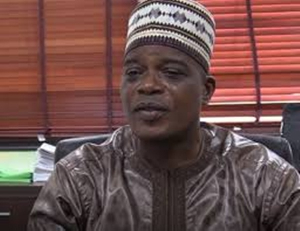(Part 3)
In the first and second parts of these series, I focused on the people who were resettled as a result of the Akosombo Dam at Kwahu-Amanfrom and discussed in general the following:
• The resettlement process;
• Hardships that turned a community of self-sufficient people to depend on food parcels and handouts for survival;
• Allocation of small, sub-standard properties with no sanitary facilities to larger families who were originally living comfortably on their ancestral lands;
• Ploughing vast areas of land and experimentation with mechanised farming for the cultivation of tobacco and maize; and
• Abandonment of the settlers - VRA withdrawal of machinery and farming equipment whilst the people were still struggling to familiarise themselves with their new ways of life, etc.
This final part will concentrate on the social impacts and the ramifications of poor decision making on a community of innocent people whose only "offence" was to be forcibly resettled to make way for the Akosombo Dam. The settlers sacrificed everything only to be rewarded with hunger, poverty, disease and premature deaths, consequently annihilating a generation and their cultural heritage. They trusted the government of Ghana and relied wholeheartedly on the honesty of the VRA but their humility was abused and destiny, tramped upon.
As a result of the poverty that engulfed the community, education of their children suffered. The first pioneers of the Kwahu-Amanfrom Local Authority Middle School completed their elementary education in 1968. This writer was among the second pioneers who completed in 1969. From 1968 to date, the percentage of pupils who pursued courses in the secondary schools or other second cycle institutions would be less than one percent of the number of pupils who passed through the school. This is an abysmal statistics and the reasons cannot be far-fetched.
The settlers’ main livelihood was derived from the cultivation of maize, tobacco and tomatoes. Whatever earnings accrued from their farming were used to buy food by way of the barter system and cater for other needs of their families. Moreover, farming was seasonal and therefore further education for the children after completion of primary school was not a top priority. It was rather an opportunity cost - choosing between survival and further education of the children, in a community with limited resources and unpredictable incomes.
Those of us who passed the then Common Entrance Examinations had our hopes shattered because our parents could not afford the additional financial burden. I had to work hard and self-educate myself after elementary school. Taking cognisance of the crest-fallen families, bleak futures, hopelessness, rapidly deteriorating standard of living and lack of opportunities, it would be irresponsible to point fingers at parents for not trying. Education being the backbone of every community meant our town was doomed. It lacked the human resources and capabilities which would propel and advance its population to the next phase of the social development ladder. If these destitute settlers could not afford to educate their children, why was not the Government Northern Scholarship Scheme that catered for pupils from the Northern Regions extended to cover children of the settlers? Something similar could definitely have been implemented.
No wonder the town is now a pale shadow of itself. The buildings are falling to pieces. After forty-six years, most of the houses have not ever been refurbished. As outsiders reading this, it would be hard to believe and make sense of the facts, but survival has always been uppermost on the minds of the settlers.
It is said that, anything that goes up must come down. Therefore to man, death is inevitable. But what happened in my hometown was beyond belief. When we moved to the town in 1964, the environment was different from what we were used to. After the forest was destroyed to make way for mechanised farming, we were introduced to a new phenomenon - WIND. From 8 p.m. every evening, a terrific wind would start blowing from the mountains across the town. The wind was so strong that it would shake our houses as if they would be moved out of their foundations. It persisted till dawn or more often, between 8 p.m. and 8 a.m. We would wake up to see dust in our rooms, on our beds, in our ears and practically everywhere. We would be lucky to have three days in a month where there would be no wind. Within a short time, the aluminium roofs on our buildings were being blown away. However, the wind brought one major respite. It drove the mosquitoes away at night.
One of the major worries in the new township was the death rate. People were dying literally like flies. The rate at which people were dying was so alarming that, my father and his elders met to find the cause in futility with no support from the government. It was quite the opposite in our old town where the death rate was minimal and similar to any typical Ghanaian community. The deaths were not limited to the elderly alone. It included able-bodied men and women as well as children. People who were sick or ill had to go to Nkyenekyene, Kwahu-Tafo, Atibie or Nkawkaw, a distance of between 20 to 50 miles for treatment.
The major reason for the deaths we believed was mal-nutrition. When I was at school, I remember my parents and grandfather would each eat a ball of kenkey or porridge (koko) for breakfast and nothing again until supper in the evening. This situation was the same in almost every household because the people could not grow any staple crops like yam, plantain, cassava or cocoyam. The adult population were literally surviving on one square meal a day. The first thing which is conspicuously absent to visitors to the town these days is the absence of farms. The land has now almost turned into a desert, desolate with only nim trees growing everywhere.
Since we moved to our new resettlement in 1964, about 90% of the adult population over the age of 18 years at the time of the "exodus" have passed on to eternity. This is a catastrophe because in Africa, the youth depend on the elders to pass on the community’s customs, traditions and norms. The youth of Kwahu-Amanfrom have been deprived of this important traditional legacy. Indeed, the Volta River Project has exacted a heavy price on the poor settlers.
Amongst the causes of the high mortality in the resettled communities along the Volta River, in addition to mal-nutrition, as reported by various environmental and public health experts are the following:
• Greater poverty within the communities led to problems such as crime, prostitution, and an increase in sexually transmitted diseases;
• Psychological trauma caused by the sudden removal of the settlers gave way to depression and mental health in some people;
• Accommodating larger families in houses with small room spaces caused overcrowding and discomfort, creating conditions for the spread of communicable diseases;
• The reduction in the flow velocity in the Main River and resultant proliferation of aquatic weeds. These have in turn led to an increase in the number of snails, particularly those that carry the bilharzias (Schistosomiasis) disease. Hence, increased prevalence of urinary and other forms of Schistosomiasis. I and many of my school friends for example had several incidences of bilharzias in our younger days;
• Questions have been raised about the high prevalence of River Blindness (Onchocerciasis) and African Sleeping Sickness (Trypanosomiasis) in communities along the lake, particularly in the Asukawkaw area;
• Poor environmental sanitation facilitated the spread of water-borne diseases. There was no coherent governmental initiative, including medical facilities in proximity for their control. etc.
• Land degradation due to accelerated erosion caused through inappropriate land use, mechanised farming, etc culminating in widespread dust/particulate pollution and bronchial infections.
• Alleged use of chemicals to control aquatic weeds by the VRA and same by unscrupulous fishermen causing high concentration of toxic chemicals in the food chain.
It is worth mentioning that the list of known issues that have caused infirmities in the resettlement population would fill a whole book. Yet the government of Ghana watches on whilst these are exacerbated as time passes.
No community would develop without basic infrastructure to sustain economic activity. The roads linking Kwahu-Amanfrom to nearby commercial centres have always been in deplorable condition particularly during the rainy seasons. This is probably not peculiar to the town alone as there are similar conditions in most parts of the country. In my view, whoever project-managed the creation of a settlement town, near to the impounding reservoir of a hydro-power dam, and allowed the construction of adequate road network and provision of welfare, hygiene and basic medical facilities to slip through the net, was indeed a joker, an unqualified professional who lacked understanding in the fundamental principles of project planning and management.
This manager, employed by the VRA, under the auspices of the government of Ghana, encouraged mechanised farming of tomatoes, tobacco and maize and inadvertently allowed the vegetable to perish because buyers had no access to the farmers and the farmers had no access to the markets. What is the logic here?
More often than not the roads leading the town have not been usable. Passengers going to other parts of Kwahu either had to travel on a motor boat to Adawso, a distance of about 20 miles to catch a vehicle or make a detour through Begoro, Osiem, and Osino to Nkawkaw. If provision of a decent road to Kwahu-Amanfrom was an oversight, it should not be too late to go back to the drawing board and do the decent thing.
The resettlement town was built with no electricity and water supply, even though provision of these two essential amenities was on top of the list of promises made to the people. Therefore the town could not attract any industries and was doomed from the onset when the experimentation failed. The irony is that the town received its first electricity supply, when it was connected to the national grid, forty-one years after its creation.
The facts are; the VRA forcibly evacuated some innocent population, flooded their homes and land with a hydro-power dam specifically for the generation of electricity and FORGOT to let the people affected benefit from the electricity generated until after forty-one years. Ghana is a peaceful country! After 46 years of the town, its water supply project is not yet completed!
Notwithstanding the economic benefits of the dam, failure to institute definitive, tried and tested holistic plans to deal with the aftermath, has created monumental socio-economic, health and environmental problems for the settlers. Majority of Ghanaians enjoy the luxuries associated with the dam without knowing that the settlers who sacrificed so much have been neglected and relegated to the background of the national development agenda.
We have a moral obligation to remember these settlers for their lost heritage and recognise the sufferings they have been through. All the best efforts put in to date have been too little and done nothing other than to consign a generation to the scrapheap of Ghana's modernisation. Perhaps it is not too late ....., and above all, the people living around the ongoing Bui Dam catchment, should not suffer the same fate.
Opinions of Thursday, 16 September 2010
Columnist: Nyarko, Kwasi
The Volta River Project: The Other Side Of The Story
Business













